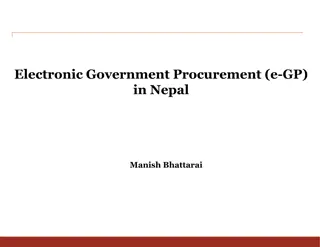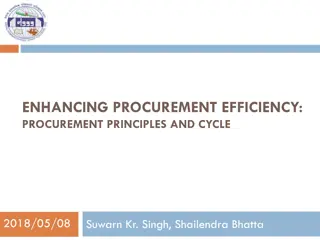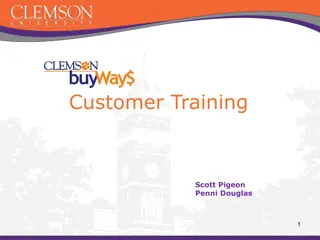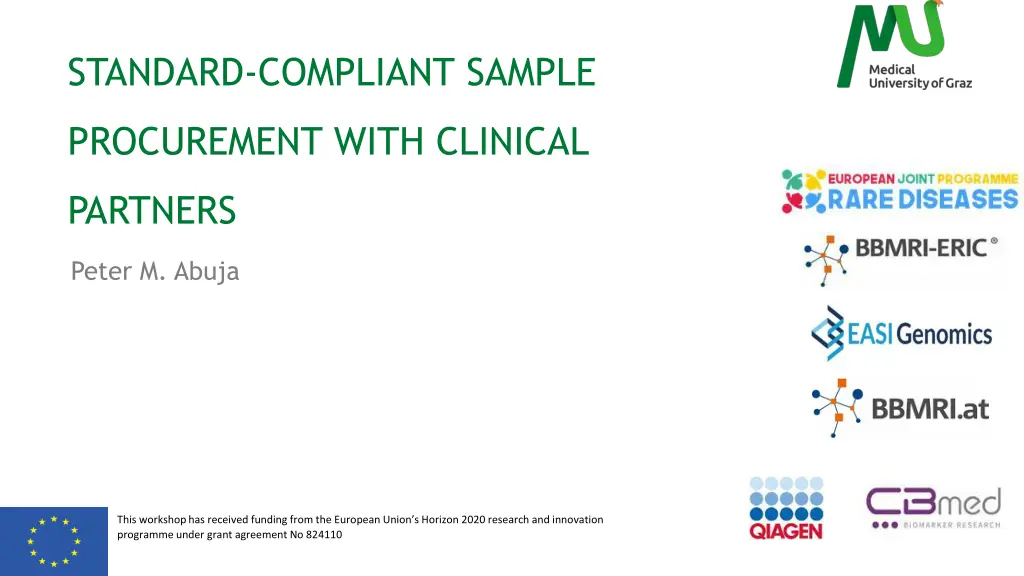
Efficient Clinical Sample Procurement with Partners
Enhance your workflow for standard-compliant sample procurement in collaboration with clinical partners. Learn about key steps such as engaging clinicians, obtaining informed consent, and coordinating with pathologists. Ensure seamless integration of the active study into the clinical workflow by following established procedures and maintaining communication with all stakeholders involved.
Download Presentation

Please find below an Image/Link to download the presentation.
The content on the website is provided AS IS for your information and personal use only. It may not be sold, licensed, or shared on other websites without obtaining consent from the author. If you encounter any issues during the download, it is possible that the publisher has removed the file from their server.
You are allowed to download the files provided on this website for personal or commercial use, subject to the condition that they are used lawfully. All files are the property of their respective owners.
The content on the website is provided AS IS for your information and personal use only. It may not be sold, licensed, or shared on other websites without obtaining consent from the author.
E N D
Presentation Transcript
STANDARD-COMPLIANT SAMPLE PROCUREMENT WITH CLINICAL PARTNERS Peter M. Abuja This workshop has received funding from the European Union s Horizon 2020 research and innovation programmeunder grant agreement No 824110
Timeline of a study Ethical, legal considerations Concept Study design Ethics board Active study Study completed Clinical partner # of cases available Decide about Analysis and during study inclusion interpretation: Clinical workflow include clinicians Review clincal Integrate collection Case number and pathologists workflow into clinical Availability of workflow and Data storage, Develop material pathology publication and standardized Pathologist deployment sample collection Pathologist Suitability of process and secondary material documentation diagnosis selection of useable specimens support in aliquoting
Integrating the active study into the clinical workflow Study workflow Study documentation Include patient? Patient ID, data Sample collection transport processing storage analysis Patient admission Primary diagnosis Informed consent Medical treatment Pathology Phlebotomy Grossing Biopsy Selection of Clinical workflow material for Surgery Secondary diagnosis Study Medical documentation
Prepare your workflow to be done upfront Contact clinical partner and pathologist(s) Learn about clinical and pathology procedure Learn about suitable cases and frequency of occurrence Clinicians and pathologists have the last word regarding which samples you can get Sample collection must never interfere with treatment and diagnosis! Engage treating physician/clinician Must obtain IC and inform the patient Physician/clinician must understand the study to be able to explain it to the patient! Engage pathologist (for tissue samples) Can support you getting the right material, makes suggestions for proper dissection, etc.
Prepare your workflow steps to be performed to match clinical processes Keep order and keep it simple Pre-label everything Pre-order blood collection tubes in the right sequence Sequence must match sequence in documentation Avoid having changing personnel in the study, or train them all Instruct people involved in sample collection Train your partners in following standards and instructions Give reasons and explain consequences of non-compliance with standards
Prepare your workflow steps to be performed by you Keep order and keep it simple to avoid errors Prepare logically organized documentation (CEN/ISO) Pre-label everything For tissue aliquoting develop a simple, logical scheme Engage help if possible experienced Aliquoting and documentation should be separate tasks by different persons
Documentation Documentation templates according to CEN/ISO standards Modular templates for each part of the workflow Can be combined differently to give a project-specific documentation form Machine-readable paper forms best whenever documentation in different places, by different persons (form accompanies patient/ samples) No validity check during documentation No direct link to medical data Electronic form best for avoiding errors validity checking, direct linking of medical data, photodocumentation, etc. Difficult when moving between different departments/networks Difficult sometimes in a lab setting (gloves, decontamination) Largely a matter of (personal) preference
Documentation Documentation according to CEN/ISO standards Enrolment of patient Collection of specimen and transport Tissue aliquoting and storage Individual modules adapted for the study and merged
Documentation of enrolment of patient Is to be filled after patient signs informed consent Most data requested by standards may be documented before actual sample collection starts Complex data like diagnosis may be filed from electronic documentation, or depending on study, diagnosis may be pre-filled already in documentation (inclusion criterion) Data requested by standards Patient ID (coded), date of enrolment, diagnosis (free text copied from patient record, better: ICD-10 code), treatment (if needed by the study), sex, age (better age group, depending on study, sometimes year of birth) Confirmation that IC is available (remains usually in clinic), date of IC, name/ID of physician collecting IC Name/ID of person collecting these data
Collection and transport Filled in during/after surgery Documentation requested (described in use case): Repeat Patient ID, date of enrolment (check) Date and time of collection, specimen type, start of warm and cold ischemia, method of tissue extraction (surgery, biopsy document device used), Name/ID of person collecting tissue (this is not the surgeon!) Transport container and labelling must be pre-specified (brand, model, lot, ), any deviations noted Start of transport (date, time), transport conditions (e.g. 2-8 C, wet ice, temperature logged) Name/ID of person transporting the specimen Date & time of reception in laboratory, name/ID of person receiving, confirm check of patient ID, container label Specimen type and number of parts
Tissue work-up Described in the use case
Thank you Contact: Peter M. Abuja Medical University of Graz, Austria Peter.abuja@medunigraz.at

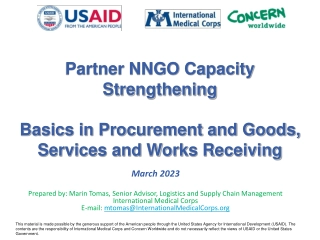





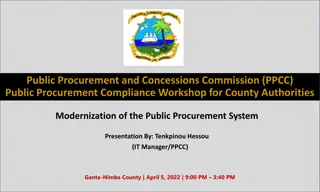
![Comprehensive Overview of Corruption Watch Submission on Public Procurement Bill [B18B-2023]](/thumb/138344/comprehensive-overview-of-corruption-watch-submission-on-public-procurement-bill-b18b-2023.jpg)



